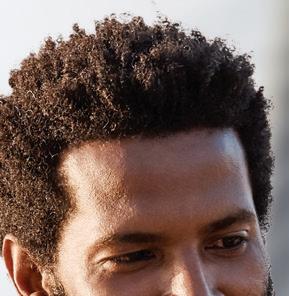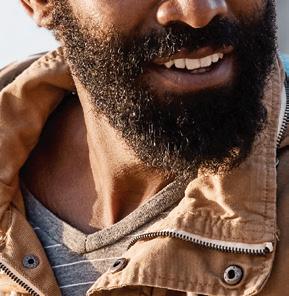
Park University International Center for Music Presents


Park University International Center for Music Presents
Thursday, November 14, 2024 • 7:30 p.m.

P ARK UN IVERS IT Y




Dear Esteemed Patrons and Lovers of Music,
As we embark on a new season at the International Center for Music at Park University, I find myself reflecting on the profound impact that music has on our lives. It’s not just the sound that resonates, but the emotion and dedication behind every performance that truly moves us. As Artistic Director and founder of this institution, I am continuously inspired by the exceptional talents of our students, faculty, and guest artists who pour their hearts into their craft. Kansas City is a remarkable place, home to a community that cherishes and supports the arts with unparalleled enthusiasm. Our concert series is designed to bring you closer to the magic of live music, offering an intimate and accessible way to experience the brilliance of our performers.
Our mission remains steadfast: to create an environment where musical excellence thrives, free from the distractions and financial burdens that often hinder artistic growth. At Park ICM, we are committed to nurturing the next generation of musicians with the same intensity and focus that shaped my own musical journey.
This season, we are proud to present a lineup that includes not only our extraordinary students and faculty but also internationally acclaimed guest artists whose contributions to the world of music are nothing short of legendary. In keeping with our mission, we will also introduce you to the newborn stars, the bright talents who represent the future of classical music. Each concert is an opportunity to witness the convergence of passion, discipline, and talent, creating moments that linger in the heart and mind.
I invite you to join us in celebrating the transformative power of music. Your presence and support are invaluable to us, fueling our drive to reach new heights of artistic achievement. Together, let’s create a symphony of shared experiences that transcends time and space.
With deep gratitude,


Stanislav Ioudenitch Founder and Artistic Director International Center for Music at Park University
P.S. Each performance is a manifestation of our shared love for music. Your presence and applause amplify our drive to elevate the art form further.
2ND ROMANCE FOR VIOLA AND PIANO: AMOROSO
.......................................................................................
Adolphus Hailstork (1941)
Victor Diaz, viola
Lolita Lisovskaya-Sayevich, Piano
HUNGARIAN RHAPSODY OP.68 ......................................................................................
David Popper (1843-1913)
Diyorbek Nortojiev, Cello
Lolita Lisovskaya-Sayevich, Piano
VIOLIN CONCERTO NO. 1 IN F-SHARP MINOR, OP. 14 ..................................................................................
I. Allegro Moderato
Henryk Wieniawski (1835-80)
Yin-Shiuan Ting, Violin
Lolita Lisovskaya-Sayevich, Piano
KOL NIDREI OP.47 ............................................................................................
Max Bruch (1838-1920)
James Farquhar, Cello
Lolita Lisovskaya-Sayevich, Piano
NAVARRA, OP.33
...............................................................................
Pablo de Sarasate (1844-1908)
Aviv Daniel, Violin
Yuren Zhang, Violin
Lolita Lisovskaya-Sayevich, Piano
Intermission
I. Nicht schnell
II. Einfach, innig
Robert Schumann (1810-56)
Ilkhom Mukhiddinov, Violin
Lolita Lisovskaya-Sayevich, Piano
...........................................
I. Introduction
II. Young Juliet
III. Dance of the Knights
Sergei Prokofiev (1891-1953) (arr. by V. Borisovsky)
POÈME, OP. 25
Christian dos Santos, Viola
Lolita Lisovskaya-Sayevich, Piano
Ernest Chausson (1855-99)
Mumin Turgunov, Violin
Lolita Lisovskaya-Sayevich, Piano
FANTASY PIECES OP.73
I. Zart und mit Ausdruck
II. Lebhaft, leicht
III. Rasch und mit Feuer
Nikita Korzukhin, Cello
Robert Schumann
Lolita Lisovskaya-Sayevich, Piano
QUARTET NO. 12, D 703 (QUARTETT-SATZ)
Franz Schubert (1797-1828)
Mumin Turgunov, Violin I
Ilkhom Mukhiddinov, Violin II
Christian dos Santos, Viola James Farquhar, Cello

Born into a Tashkent (Uzbekistan) musical family, Lolita Lisovskaya-Sayevich began studying piano at the age of 4. In 1985, she entered the Uspensky Central Music School in Tashkent. In 1993, she started attending a private school for young musicians in Moscow, and that same year received the first prize at the Chopin International Piano Competition in Göttingen, Germany. She entered the Tchaikovsky Special Music School in 1995, and two years later was accepted to the Tchaikovsky Moscow Conservatory under the tutelage of Vera Gornostaeva, with whom she continued postgraduate study from 2002 to 2004. Lisovskaya-Sayevich also studied with Stanislav Ioudenitch at Park University.
In 1996, Lisovskaya-Sayevich received the first prize from the Nikolai Rubinstein International Piano Competition, and in 2007 the first prize at the Iowa International Piano Competition. She was awarded scholarships from the Rostropovich Foundation, the Spivakov Foundation and the Nikolai Petrov Foundation. She has also earned the laureate designation from the international program “New Names,” and the festival “Virtuoso 2000” in St. Petersburg, Russia. Lisovskaya-Sayevich has recorded at the Hessen Radio Station in Frankfurt, Germany, and at Orfei Radio in Moscow.
Lisovskaya-Sayevich has presented numerous solo recitals and has played as a soloist with orchestras in Austria, France, Japan, Spain, Germany, Hungary, Italy and Russia. She has participated in many music festivals, including the Bashmet Festival in Tours, France, “Wave 2000” in Japan, International Musical Arts Institute in Maine (USA), Killington Music Festival in Vermont (USA), “Ars Longa” and “Primavera Classica” in Moscow. She collaborated with such renowned musicians as Daniel Muller-Shott, Shmuel Ashkenazy, members of the Boston Symphony Orchestra and many others. She now performs extensively in chamber music ensembles.
Victor began his musical training in Bogotá, Colombia at the National Colombian Conservatory and finished his undergraduate studies at the UMKC Conservatory. He was a four-time winner of The Young Performer Competition from the Colombian Republic Bank. He has traveled the world several times with orchestras and organizations such as the Colombian Youth Philharmonic, Orchestra of the Americas, Sphinx Organization, Mahler Chamber Orchestra Academy, and Allegro Vivo Music Festival in Austria.
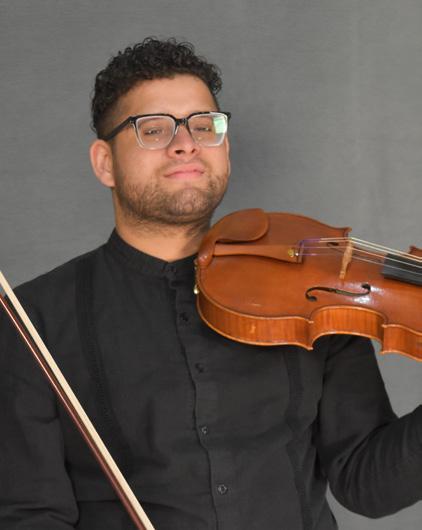
Currently, Victor is completing his graduate studies at Park ICM, subs for the KC Symphony, and teaches privately and for nonprofits such as String Sprouts and Base Academy of Music. Victor is developing outreach performances in Kansas City that include Latin American repertoire for the viola. When he is not performing or teaching, Victor spends time with his loved ones and takes long walks with his dog: Maureen.
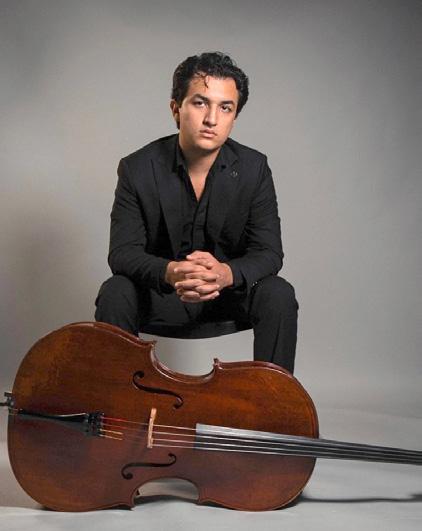
Diyorbek Nortojiev, a dedicated cellist, is currently pursuing a Graduate Certificate in Cello Performance under the guidance of world-renowned soloist and professor Daniel Veis.
Originally from Uzbekistan, Diyorbek’s musical journey began over a decade ago at the prestigious Glier School of Music in Tashkent, where he honed his craft under celebrated mentors such as Dadabaeva Nigora and Jakhangir Ibragimov. His talent has gained international recognition, notably in 2024, Diyorbek was honored as the recipient of the Undergraduate Scholarship from the Kansas City Alumnae Chapter of Sigma Alpha Iota. In 2018 he showcased his skills at the IV S. Knushevitsky International Cello Competition in Saratov, Russia, and secured 1st prize at the II “Istedod” International Music Competition in Tashkent that same year. In 2017, he also earned 3rd prize at the A. Jubanov International Competition in Almaty, Kazakhstan.
Diyorbek has continued refining his artistry through participation in masterclasses with distinguished musicians such as Na Mula and Suren Bagratuni. While passionate about solo cello repertoire, he also finds great joy in collaborating with chamber ensembles and orchestras, including the Kansas City Symphony where Diyorbek serves as a regular substitute.
Born in Kaohsiung, Taiwan, Yin-Shiuan began to play the violin at the age of 7, and her passion for the instrument continued to grow over the years. In her native Taiwan, Yin-Shiuan studied violin with Jung-Shin Fang and Geoffrey Yeh. From 2016 to 2019, Yin-Shiuan was a member of the Kaohsiung Youth Symphony Orchestra. In 2021, she took the 3rd prize at the National Student Music Competition in Kaohsiung. She has participated in masterclasses with famous musicians like Olivier Charlier, Midori Gotō, and Hu Nai-yuan.

Yin-Shiuan is a student of Ben Sayevich currently working on her Bachelor’s Degree in Violin Performance.
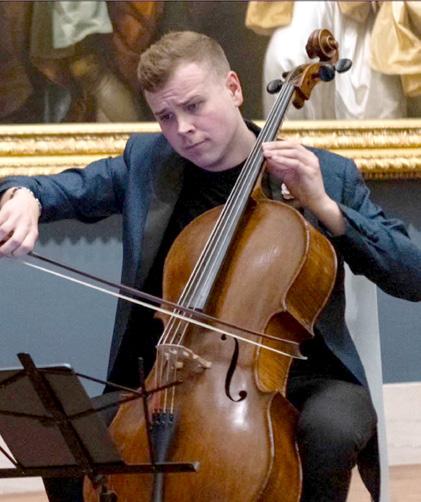
James Farquhar is currently a student of Daniel Veis. He just concluded pursuing a Master’s Degree in Cello Performance from Park University’s International Center for Music and is continuing for an additional graduate degree - Graduate Certificate in Performance. He is formerly a student of Kurt Baldwin of the Arianna String Quartet at the University of Missouri - St. Louis. Under Baldwin’s instruction, James attained 2019-20 UMSL Artist of the Year with the Rococo Variations by Tchaikovsky. In the Spring of 2022, he was also named Odyssey Chamber Music’s Performance Fellow, with a culminating solo recital, in collaboration with pianist Peter Miyamoto (University of Missouri’s professor for piano). During his time pursuing his undergraduate degree, James organized numerous community recitals around St. Louis and Kansas City.
He has received invaluable instruction from the likes of the Arianna String Quartet,
the Brooklyn Rider String Quartet, the Harlem String Quartet, the Jupiter String Quartet, the Rolston String Quartet, Dennis Parker, Scott Lee, Jackie Lee, Frank Huang, and Shmuel Ashkenazy, among numerous others. James has also participated in various chamber music festivals including the Arianna Chamber Music Festival, Madeline Island Chamber Music Festival, Heartland Chamber Music Festival (as a festival scholar from the 2017-2022 seasons), Stringwood Festival, and Chamber Music in the Mountains (Mt. Lemmon, Arizona).
James is a Teaching Artist for Harmony Project KC, a nonprofit that provides year round music education for underserved students from the diverse Historic Northeast Community of Kansas City, Missouri. James also aspires to organize grant-funded outreach concerts for underserved elementary schools, hospitals and nursing home communities.
Aviv Daniel is an Israeli violinist, born in 2000 in Jerusalem. He started playing the violin when he was very young. He studied at the Thelma Yellin High School of arts and then in Buchman Mehta School of music at Tel Aviv University with Professor Mila Feldman. Today Aviv is studying at Park University with Professor Ben Sayevich.
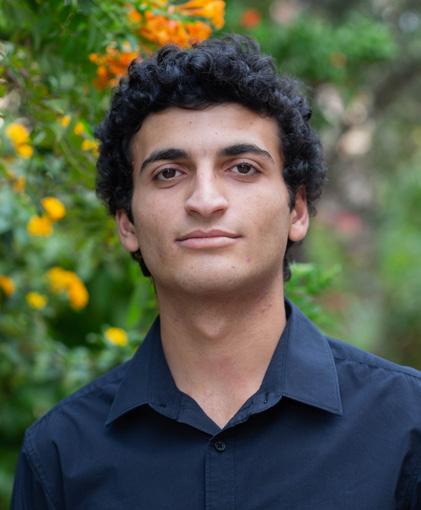
Aviv took part in masterclasses with teachers and violinists Miriam Fried, Grigory Kalinovsky, Hagai Shaham, Annie Shnarch, Vadim Gluzman, Dora Schwartzberg, Itzhak Rashkovsky, Chaim Taub and Irena Svetlova. He participated in the David Goldman Program for Outstanding Musicians and Jerusalem Music Center Programs such as Huberman Program. Aviv also played as a soloist with Thelma Yellin Symphony Orchestra in a tour in January 2018. Aviv also took part in “Kesher Eilon” summer course in 2019. In the past, Aviv studied violin with Professor Matvey Liberman (student of David Oistrakh), Emma Elishov, Mira Masin and Ludmila Ozrizky.
Aviv plays on a violin loaned by America Israel Culture Foundation. He has been a recipient of America Israel Culture Foundation scholarships and of Ronen Foundation scholarships since 2015.

In 2009, Yuren was admitted to the Central Conservatory of Music’s Primary School and received the sole opportunity for guaranteed admission to the Middle School. He studied under Wang Hong and Chai Liang. In 2018, Shmuel Ashkenasi recognized his talent and brought him to study with him at the Mannes School of Music in the United States to pursue his undergraduate degree with a full scholarship.
Yuren has won first place in the Hong Kong International Violin Competition and the Stradivarius International Violin Competition’s China division, among other awards. He has participated in masterclasses with recognized names such as Midori, Maxim Vengerov, Ivry Gitlis, Zakhar Bron, Vadim Repin, Lewis Kaplan, and Shlomo Mintz.
He has performed across the world in countries such as Germany, Belgium, the Netherlands, China, the UK, the US, and Austria. He has performed at Carnegie Hall, Lincoln Center, Kauffman Center, Kennedy Center, Beijing Concert Hall, the National Centre for the Performing Arts, and WDR Concert Hall.
Yuren is currently pursuing a graduate certificate at Park University at the International Center for Music under Ben Sayevich.
Uzbekistan-born violinist Ilkhom Mukhiddinov has won acclaim for his high professionalism. His extraordinary technical abilities transmit a fresh interpretation of standard and contemporary classical repertoire.
Born in Tashkent in 2001 into a family of musicians, Ilkhom started his musical journey in the Uspensky Specialized Music Lyceum. Ilkhom made his debut with the Uspensky Symphony Orchestra at the age of 7. Since 2012, Ilkhom has been named prize winner of over 10 competitions and festivals. Some of his recent awards include first prize at the Hellam Young

Artist Competition, finalist and “Jury special mention” at the Leonid Kogan international Competition, and 1st Prize at the Naftzger competition. Ilkhom has worked with a number of internationally recognized concert artists and pedagogues such as Miriam Fried, Shmuel Ashkenasi, Gil Shaham, Nicholas Kitchen, Ani Kavafian, Mark Kaplan, Danny Phillips, Francesca dePasquale and Jaime Laredo.
Since 2012, Ilkhom has been named prize winner of over 10 competitions and festivals. Some of his recent awards include first prize at the Hellam Young Artist Competition, finalist and “Jury special mention” at the Leonid Kogan international Competition, and 1st Prize at the Naftzger competition.
Currently Ilkhom is pursuing a Graduate Certificate in Music Performance at the International Center for Music at Park University, where he studies with Ben Sayevich.

Christian Santos started his journey playing the Viola in 2012 in Sao Paulo, Brazil, at the age of 13. He studied at the Sao Paulo State Music School with violists Mariana Costa Gomes and Silvio Catto before becoming a student of Peter Chun at the International Center for Music at Park University. Christian has performed with several orchestras such as the Brazilian National Symphony Orchestra, Bauru Symphony Orchestra, Lins Youth Symphony Orchestra, and the exceptional Sao Paulo State Youth Orchestra, with which he recorded CDs with masterpieces such as Mahler’s 5th Symphony, Bartok’s Miraculous Mandarin, Kodaly’s Dances of Galanta, Claudio Santoro’s 9th Symphony, to name a few. In these orchestras he performed with prestigious conductors such as Giancarlo Guerrero, Marin Alsop, Michael Tilson Thomas, Neil Thompson, Claudio Cruz, Marcelo Leningher, Michal Klauza, Bruno Mantovani, and others.
When it comes to chamber music, Christian had amazing experiences in the Pianosofia (directed by the pianist Cristian Budu), Martinez Quartet, and Sao Paulo State Youth Orchestra String Quartet. He has had opportunities to work with other musicians such as Christoph Hartmann (Berlin Phil), Jon Thorne (London Phil), Shmuel Ashkenasi (Curtis), Ben Sayevich (Park University), Daniel Veis (Park
University), the Modigliani Quartet members, etc. Currently, Christian is the violist of the Park Quartet at the International Center for Music and Viola Principle of the ICM Chamber Orchestra.
In music festivals, solo masterclasses, and international activities, Christian worked with artists such as Hsin Yun-Huang (Juilliard), Ruth Killius, Tim Deighton (Penn State), Hong Mei-Xiao (University of Arizona), Rafael Altino (Carl Nielsen Academy) Antal Zalai, Asbjørn Nørgaard (Danish Quartet), Agata Szymczewska (13th Wieniawski Winner), Antonio Meneses, to name a few. He also worked as guest and side-by-side performer for the New World Symphony, Youth Orchestra of Americas, and Boston Youth Symphony.
Muminjon Turgunov is a student of Ben Sayevich currently working on his Bachelor’s Degree in Violin Performance. Prior coming to the United States in 2019, he studied for 11 years at the Glier School of Music in Tashkent, Uzbekistan, with such renowned teachers as Nikitin Yaroslav and more.
In 2018 Turgunov started working as a concertmaster of “Consonanza” Chamber Orchestra at the Tashkent and Uzbekistan Diocese. In the same year, he was awarded a Diploma for the Best Musician of the Season “Spring 2018.” In 2019, Turgunov participated in the Republican Competition of Uzbekistan and won second prize. In 2020, he was privileged to work as a full time violinist in the “State Symphony Orchestra.” He has a passion for playing violin solo repertoire, but greatly enjoys playing in chamber ensembles and orchestras. From 2022 until now, Turgunov won a position as a substitute violinist in the Kansas City Symphony. In the Summer of 2023 he was privileged to be part of the National Repertory Orchestra under conductor Michael Stern.


Nikita Korzukhin was born in Yekaterinburg, Russia. In 2017 after graduating from Ural Music College (class of teacher Tamara Feigina), he continued his studies at St. Petersburg State Conservatory, in the class of Professor Alexei Massarsky Honored Artist of Russia. Nikita is currently studying with Professor Daniel Veis at Park University International Center for Music.
From 2018 to 2020, Nikita was an artist of the St. Petersburg Contemporary Music Ensemble MolOt, with which he performed many world premieres of works by contemporary composers on various stages as a soloist and a chamber ensemble member.
In 2019 he was awarded a certificate of honor by the Russian Music Union for his contribution to the revival of the youth composer movement in Russia and active work for the benefit of promoting modern Russian music on the national and world stage.
Nikita has performed as a soloist and as a member of chamber ensembles at such music festivals as reMusik (Saint Petersburg), Sound 59 (Perm), SILK::Road (Hamburg), Ural Music Night (Yekaterinburg) and The International Conservatory Week Festival (Saint Petersburg).
Nikita is a regular participant in master classes of such outstanding musicians as Marti Rousi, Alexander Rudin, Alexander Buzlov, Wolfgang Schmidt, David Geringas, Kirill Rodin, and many others.
Nikita is also a member of the “Adamant” string quartet as well as the “Anima” piano trio. In 2022 he had more than 30 recitals with these ensembles with diverse repertoire. He performed as a substitute musician in such renowned orchestras as MusicAeterna and Saint Petersburg Academic Symphony Orchestra.
Nikita played concerts as a soloist with such conductors as Wolf Usminsky, Michele Galante, Abulkhair Sagimbaev, Enkhbaatar Baatarjav, and Peter Gribanov. During the trip, he performed many works for cello and orchestra of various styles, from J. Haydn’s classical concerto to S.Prokofiev’s symphony concerto, written in the 20th century.

As one of the few Black voices in late-20th and early-21st century music, Adolphus Hailstork forged a path for subsequent generations during a time when there was even less diversity in new music than there is today. Currently he stands as one of the great American musicians of his generation.
Born in Rochester, New York, and raised in Albany, he was a student of Vittorio Giannini and David Diamond at the Manhattan School and of H. Owen Reed at Michigan State University — where he earned his doctorate. He also studied with Nadia Boulanger at the American Institute in France, where he absorbed much of the contrapuntal genius that so many 20th-century composers gained at Fontainebleau.
He left a mark as an influential professor, most notably at Norfolk State University and at Old Dominion University, and he has produced a large body of works, including three operas, large-scale choral works, and numerous symphonic and chamber works. His music has been performed by major American orchestras with conductors such as James de Preist, Daniel Barenboim, Kurt Masur, Lorin Maazel, Michael Morgan, and Jo Ann Falletta.
Photo:
Damian Gonzalez
Hailstork’s music is masterfully crafted, unabashedly tonal, and fundmentally melodic. “It is always lyrical, tonal, narrative, dramatic, and propulsive,” the composer has said. “I just wanted to add to the repertoire. I didn’t switch over to the school of thought that came into being in the 1960s of reinventing music. Because a lot of it just didn’t ‘sing’ for me.”
As early as the 1980s Hailstork sketched out the Two Romances for Viola and Orchestra, intended for Beverly Baker, principal violist of the Virginia Symphony. Hailstork describes the Romances, which he completed in 1997, as “simple, straightforward, tranquil pieces in ABA form.” The Second manifests not only the composer’s deft handling of texture but also his ability to craft melodies that are both beautiful and rich in developmental potential.
If Popper’s own music is little known outside the string world, his position as “uncrowned king of the cello world” stands secure. He was one of the great virtuosos of the 19th century. Born in Prague, where his father was an influential cantor, Popper studied at the Prague Conservatory with Julius Goltermann and he advanced so quickly that already as a student he began to garner praise from the likes of conductor Hans von Bülow. In 1867, he was appointed principal cello of the Vienna Court Opera.
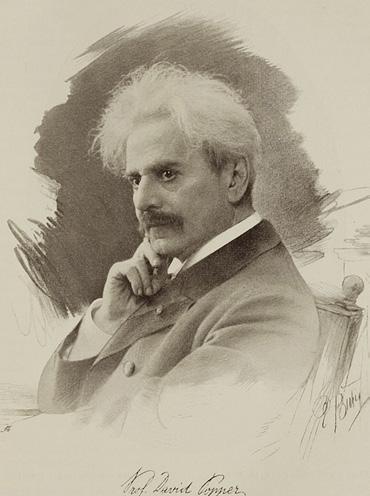
Photo by Emilie Bieber
Popper performed awe-inspiring solo recitals and concerts with orchestras such as the Gewandhaus; he was also a member of Vienna’s Hellmesberger Quartet. In 1886 he was appointed to the faculty of the newly formed Budapest Academy, where he and violinist Jenő Hubay established what came to be called the Budapest Quartet.
He composed prolifically throughout his life, and he remained consistent in his purpose: His oeuvre of 81 published works are nearly all for cello. The 40 études of the High School of Cello Playing, Op. 73, remain a sort of bible of cello pedagogy. Among Popper’s other important works are five Cello Concertos, the Requiem for Three Cellos and Orchestra, and the Hungarian Rhapsody, Op. 68.
The Rhapsody consists of six sections that use mostly melodies of Romani origin and include explorations of the Czárdás dance style. Technically demanding and yet gracefully elegant, it employs some of the same folk material that Liszt and Brahms used for their “Hungarian works.” Dedicated to the cellist Jean Gérardy, the Rhapsody received its premiere in Budapest in April 1893, with the composer as soloist.



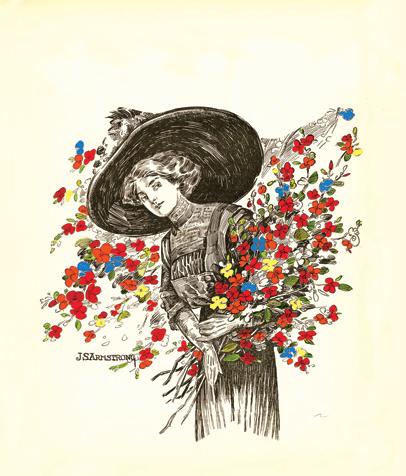

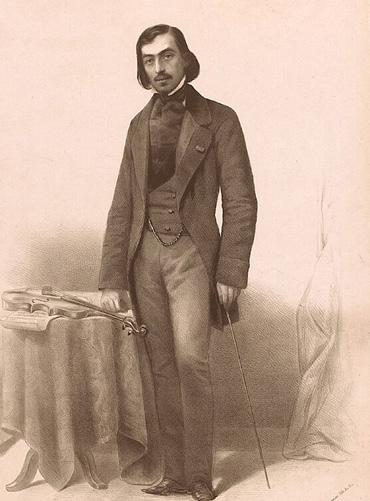
Born into a musical family in Lublin, Wieniawski was taken to Paris at the age of eight, where after three years of study he graduated from the Conservatory with first prize in violin — a virtually unheard-of achievement.
After his concert debut in Paris in 1848, he concertized extensively in Europe and Russia, often with his brother, Joseph, on piano. During the 1870s he made tours of Europe, Russia, and the U.S., performing recitals with composer/pianist Anton Rubinstein — who declared him “without a doubt the greatest violinist of his time.”
Wieniawski composed prodigiously throughout his life, producing two concertos and numerous solo pieces for violin. While the Second Concerto is more frequently heard, the First is a work filled with heart-stopping difficulties and a sort of playful gravity. It is an extraordinary achievement for a lad of 17, and was clearly designed to show off his technical prowess. Young Wieniawski and Leipzig’s Gewandhaus Orchestra presented the premiere in October 1853. The opening Allegro moderato begins with a quirky clarinet subject, which the violin reiterates and elaborates: limpid lyrical lines, cascades of double-stops and harmonics, and rapid-fire passages that culminate in a breathtaking cadenza.
Few composers of 19th-century instrumental music understood the idiom of bel canto as profoundly as Max Bruch, a contemporary of Brahms and Joseph Joachim who outlived both by a generation. “I once asked Bruch why he, a pianist, had taken such an interest in the violin,” wrote the composer’s friend Arthur Abell. “He replied, ‘Because the violin can sing a melody better than the piano can, and melody is the soul of music.’” Bruch spent his career as a conductor and teacher, and late in life took a post at the Berlin Academy. His large output

includes three stage works, sacred choral works, three symphonies, and numerous concertos, chamber works, and songs. But he is known to general audiences primarily for three works — the Violin Concerto No. 1, the Scottish Fantasy for violin and orchestra, and the Kol Nidrei for cello and orchestra.
The Kol Nidrei from 1880 drew inspiration from two Jewish sources: The haunting prayer sung toward the beginning of the Yom Kippur Eve service, and the song “O Weep for Those Who Wept on Babel’s Stream” — Isaac Nathan’s setting of Byron’s poem. The Berlin cantor Abraham Jacob Lichtenstein had bought the melodies to Bruch’s attention, and the composer was further inspired by the cellist Robert Hausmann, who urged the composer to help “fill out” the cello repertoire so that could resemble more closely the rich repertoire of works for violin.
It is one of the most beautiful works of the late 19th century. The opening “cantorial” melody is treated freely but with reverence. At the halfway point Nathan’s song introduces a dramatic change of mood, as the cellist elaborates and embellishes the tune.
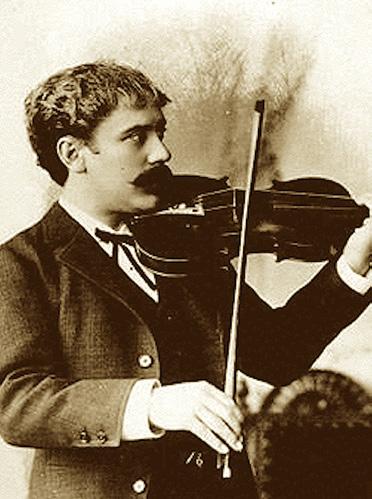
Best known today for piquant, showy violin pieces, during his lifetime Sarasate was recognized as one of the primary artists of the era. From age 15, when he embarked on his first tours of Europe and the Americas, the charismatic young prodigy thrilled audiences with what one contemporary critic called “aesthetic moderation, euphony, and technical perfection.”
Sarasate was indeed known for his dazzling virtuosity, but also for a luscious sweetness and warmth of tone. In Germany his approach was compared, sometimes unfavorably, to that of the more “serious” Joseph Joachim.
Despite this, Sarasate was lionized by public and colleagues alike. Composers dedicated major works to him, generally in hopes he would play them: Bruch’s Concerto No. 2, Saint-Saëns’s Concertos 1 and 3, Eduard Lalo’s Symphonie espagnole, and Wieniawski’s Concerto No. 2.
He composed prodigiously throughout his career. His most effective works often draw from folk tunes, dances, or other preexisting music. Among his 54 published works are four books of Spanische Tänze, the Carmen Fantasy, and Zigeunerweisen.
First published in 1889, the Navarra was a tribute to the composer’s birthplace in the Navarre region of Spain. It is a rare work for two virtuoso violins, which play in tandem (often in thirds), but also must negotiate harrowing technical difficulties in a manner that makes the two instruments sound as if they were one.
I. Nicht schnell
II. Einfach, innig
Schumann had highly productive, some say manic, periods in the 1840s and early ‘50s, during which he could produce a great deal of music in a short time. In 1849, he composed three works for wind instruments with piano: the Adagio and Allegro for French horn, Op. 70; the Fantasy Pieces, Op. 73, for clarinet; and the Three Romances, Op. 94, for oboe. Op. 70 and Op. 73 were both designed so that they could be performed on violin or cello. Simrock’s indication that Op. 94 could be played on violin or clarinet had not met with the composer’s approval. Schumann presented the Romances to his wife, Clara, for Christmas that year.
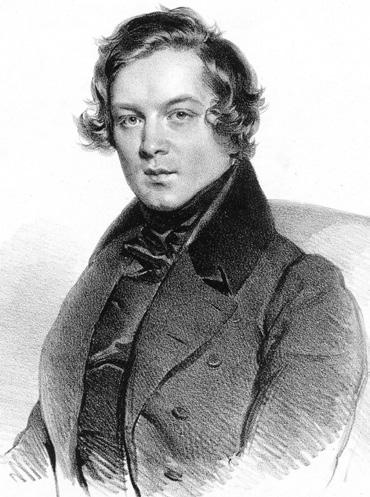
It was clear by this time that the composer’s mental health was failing — not long afterward, in Düsseldorf, he was moved into an asylum, and in 1854 he famously attempted suicide by throwing himself into the freezing Rhine. Determining the impact that this gradual deterioration had on Schumann’s compositional powers is however an elusive task.
In any event, in 1849 the music was still as strong as ever. Clara presented a private performance of the Romances the following November, with the violinist François Schubert; the original version for oboe had to wait until 1863 for a posthumous public premiere.
The first movement (Nicht schnell) shows the composer at the peak of his melodic powers. A somber conversation between the two musicians takes on a
sort of rhetorical character. The second Romance begins in A minor and moves to the parallel minor and then back to A, all in a seamless flow.
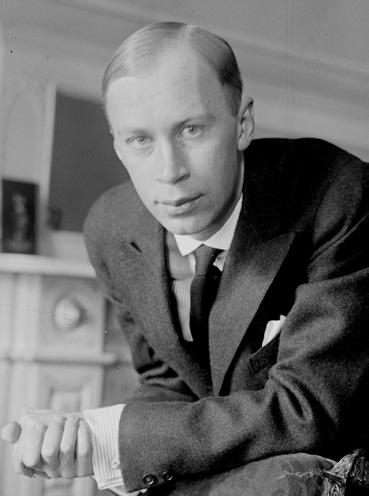
I. Introduction
II.
Prokofiev approached the idea of a ballet of Romeo and Juliet with trepidation, and with good reason. To be sure, Shakespeare’s play had found dozens of operatic adaptations, and even (by the 1930s) a few cinematic ones. But could a wordless ballet convey the full breadth of the bard’s chatty tragedy?
It was 1934, and the composer had only recently decided to return to his native land after 14 years away. He received a commission from the State Academic Theater (later the Kirov Theater) for what would become his first full-length story ballet.
It was the brainchild of the theater’s director, Sergei Radlov, who had staged the first Soviet production of The Love for Three Oranges in 1926. But this new piece fell into a miasma of intrigue, and with the ascendancy of the dreaded Party boss, Andrei Zhdanov, Radlov fell out of favor. Prokofiev had completed most of the music by 1935, and had even performed some of it. But the ballet’s Russian premiere would have to wait until 1940, by which time it had already been produced in Brno (in 1938).
Radlov was restored to the project and was joined by two collaborators to help “fix” the scenario. Initially Prokofiev had considered tacking on a happy ending, which the choreographers fortunately rejected. In the end the ballet was a success, and the suites compiled in 1936, 1937, and 1946 would quickly become favorites among orchestras around the world. Pianists and others have also prepared arrangements, often to brilliant effect.
The violist Vadim Borisovsky arranged eight movements for viola and piano. One is immediately struck by the composer’s genius for capturing the essence of character, a mood, a relationship, even the totality of the onstage action.
Few composers of the 19th century wrote music that was as openly voluptuous and effortlessly melodic as Chausson’s. And few works demonstrate this as vividly as the Poème, composed in 1896 as the composer was relaxing in Florence and trying to recuperate from a decade of work on his opera King Arthur.
After that frustrating ordeal, the Poème seemed to flow almost effortlessly — “pure music this time,” the composer wrote “inspired by the landscapes and works of art here. I had such a low opinion of my musical talents that I was surprised when I saw what ideas certain paintings awaken in me.”

Photo by P. Frois
The Poème was first performed by its dedicatee, the Belgian virtuoso Eugène Ysaÿe, in December 1896, in Nancy; its successful Paris debut was in April 1897. For years, Chausson had struggled for recognition in Paris, where even in the 1890s his music was found to be too “experimental.” He originally titled the piece Song of Triumphant Love, suggesting there might have been a hidden programmatic intent — which he abandoned favor of a work free of extramusical associations.
The soloist intones the deliciously bittersweet melody in the opening section; taking up the violinist’s urgency, the piano approaches a nervous animato passage, leading toward the climactic allegro and a return of the opening material.
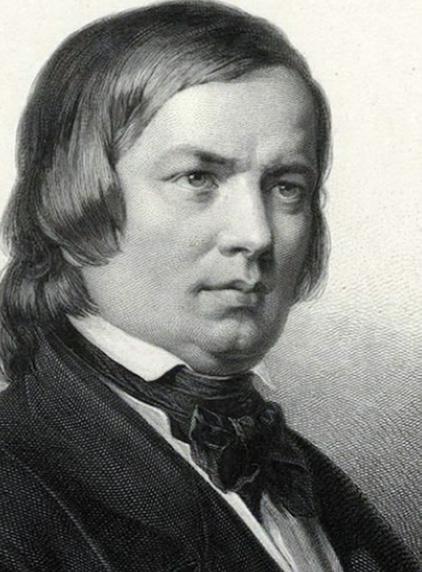
I. Zart und mit Ausdruck
II. Lebhaft, leicht
III. Rasch und mit Feuer
The same year that Schumann composed the Three Romances discussed above, he also crafted a set of Fantasiestücke for clarinet — one of his few works for
the instrument. Composed in Dresden in two days, it received a performance days later, with Clara Schumann and clarinetist Johann Gottlieb Kotte, a chamber musician in the royal Saxon court.
The first movement (Tender and with expression) shows the composer at the height of his melancholia index, while the second (Lively, light) is upbeat and playful. The third (Quick, and with fire) moves steadfastly forward, concluding with a triumphant coda.
In addition to his “Unfinished Symphony,” Schubert left dozens of single movements or fragments that often sound like the beginnings of promising works. The Quartettsatz (literally “Quartet Movement”) was composed in December 1820, during a period that also produced the oratorio Lazarus and the Wanderer Fantasy for piano.
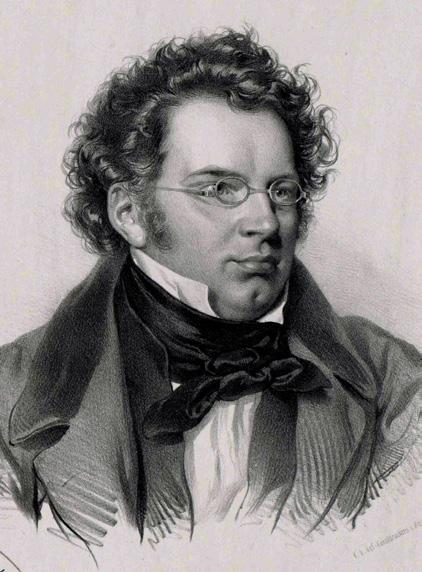
The movement’s ferocious drama hints at Schubert’s febrile last decade, during which his style would continue advancing in unprecedented ways — with an expanded sharmonic, textural, and dynamic palette. Some 40 bars of an Andante were sketched out but not completed.
Among the reasons offered for this glorious torso being left to stand on its own, the most reasonable might be that the composer, recognizing that he was leaning into a new era of creativity, never got around to three more movements that could match the intense mastery of the Allegro assai.
In his last seven years Schubert would compose several chamber masterpieces: three more quartets, two piano trios, the Octet for Winds and Strings, D. 803, and the magisterial String Quintet in C major. It is only in looking back at the Quartettsatz from the standpoint of these works, perhaps, that we realize just what a revolutionary step it represented.
The Park University International Center for Music Foundation exists to secure philanthropic resources that will provide direct and substantial support to the educational and promotional initiatives of the International Center for Music at Park University. With unwavering commitment, the Foundation endeavors to enhance awareness and broaden audiences across local, national, and international spheres.
Vince Clark, Chair
Steve Karbank, Secretary
Marilyn Brewster
Lisa Browar
Stanley Fisher
Brad Freilich
Ron Nolan
Shane Smeed
Benny Lee, Treasurer
John Starr
Steve Swartzman
Guy Townsend
Angela Walker
Karen Yungmeyer


Stanislav Ioudenitch, Founder & Artistic Director, Piano Studio
Behzod Abduraimov, Artist-in-Residence
Gustavo Fernandez Agreda, ICM Coordinator
Peter Chun, Viola Studio
Lolita Lisovskaya-Sayevich, Director of Collaborative Piano
Steven McDonald, Director of Orchestra
Ben Sayevich, Violin Studio
Daniel Veis, Cello Studio
Support the ICM, enjoy beautiful music and special events just for members.
Patrons Society members enjoy exclusive invitations to group events including meeting the talented ICM artists.

For more information on how to join our Patrons Society, scan the QR code with your mobile device camera.

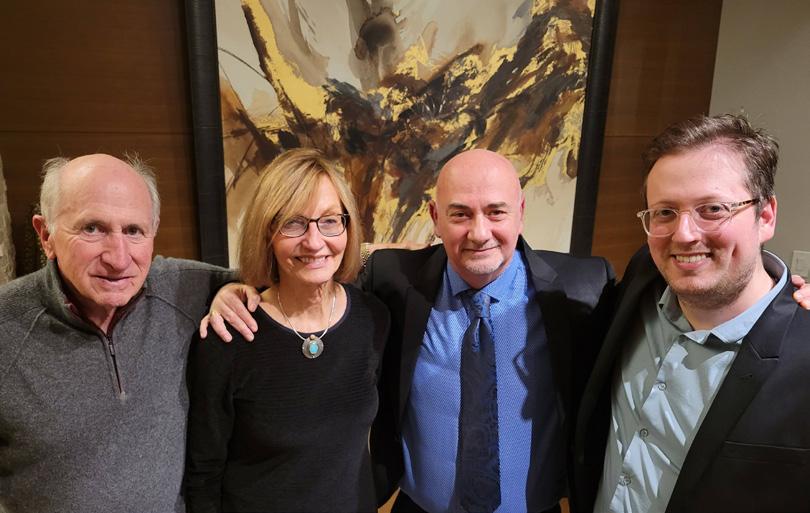

The Park University International Center for Music’s Patrons Society was founded to help students achieve their dreams of having distinguished professional careers on the concert stage.
Just as our faculty’s coaching is so fundamental to our students’ success, our Patrons’ backing provides direct support for our exceptionally talented students, concert season, outreach programs and our ability to impact the communities we serve through extraordinary musical performances.
We are continually grateful for each and every one of our Patrons Society members. For additional information, please visit ICM.PARK.EDU under “Support Us.”
We gratefully acknowledge these donors as of October 25, 2024.
Brad and Marilyn Brewster *
Steven Karbank
Benny and Edith Lee
Ronald and Phyllis Nolan
John and Debbie Starr
Steven and Evelina Swartzman
Jerry White and Cyprienne Simchowitz *
Jeffrey Anthony
Brad and Theresa Freilich
Shirley and Barnett C. Helzberg Jr. *
Holly Nielsen
Steinway Piano Gallery of Kansas City
Gary and Lynette Wages
Vince and Julie Clark
Stanley Fisher and Rita Zhorov *
Susan Morgenthaler *
Kay Barnes and Thomas Van Dyke
Lisa Browar
Mark and Gaye Cohen
Suzanne Crandall
Charles and Patty Garney *
Doris Hamilton and Myron Sildon
Colleen and Ihab Hassan
Lisa Hickok and Brian McCallister *
William and Regina Kort
Jackie and John Middelkamp
Kathleen Oldham
Kevin and Jeanette Prenger, ’09 / ECCO Select
James and Laurie Rote *
Stanley and Kathleen Shaffer
Guy Townsend
John and Angela Walker *
Nicole and Myron Wang*
Phil and Barbara Wassmer *
* 2024-2025 Member

Park University International Center for Music
Following the incredible success of our 2nd annual holiday concert last year, International Center for Music Orchestra at Park University returns to usher in the holiday season. Under the direction of Steven McDonald, the music director of the ICM Orchestra, anticipate being whisked away to the very core of the holiday spirit.
Don’t delay – secure your seats today to guarantee your presence at this enchanting musical affair! It’s an evening that not only delivers exquisite music but also fosters a profound sense of unity and community, embodying the true essence of the holiday season.
Saturday, December 7, 2024 • 7:30 p.m.
Make it an evening! Visit charming Parkville, Missouri for dinner before the concert.

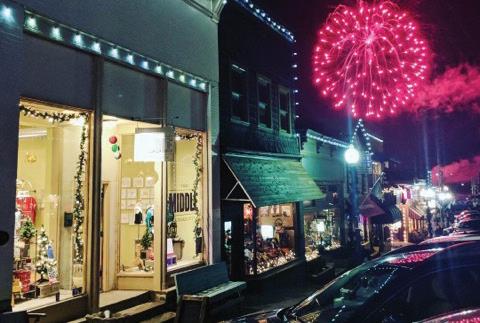
Tickets are FREE with reservation. Scan Here!



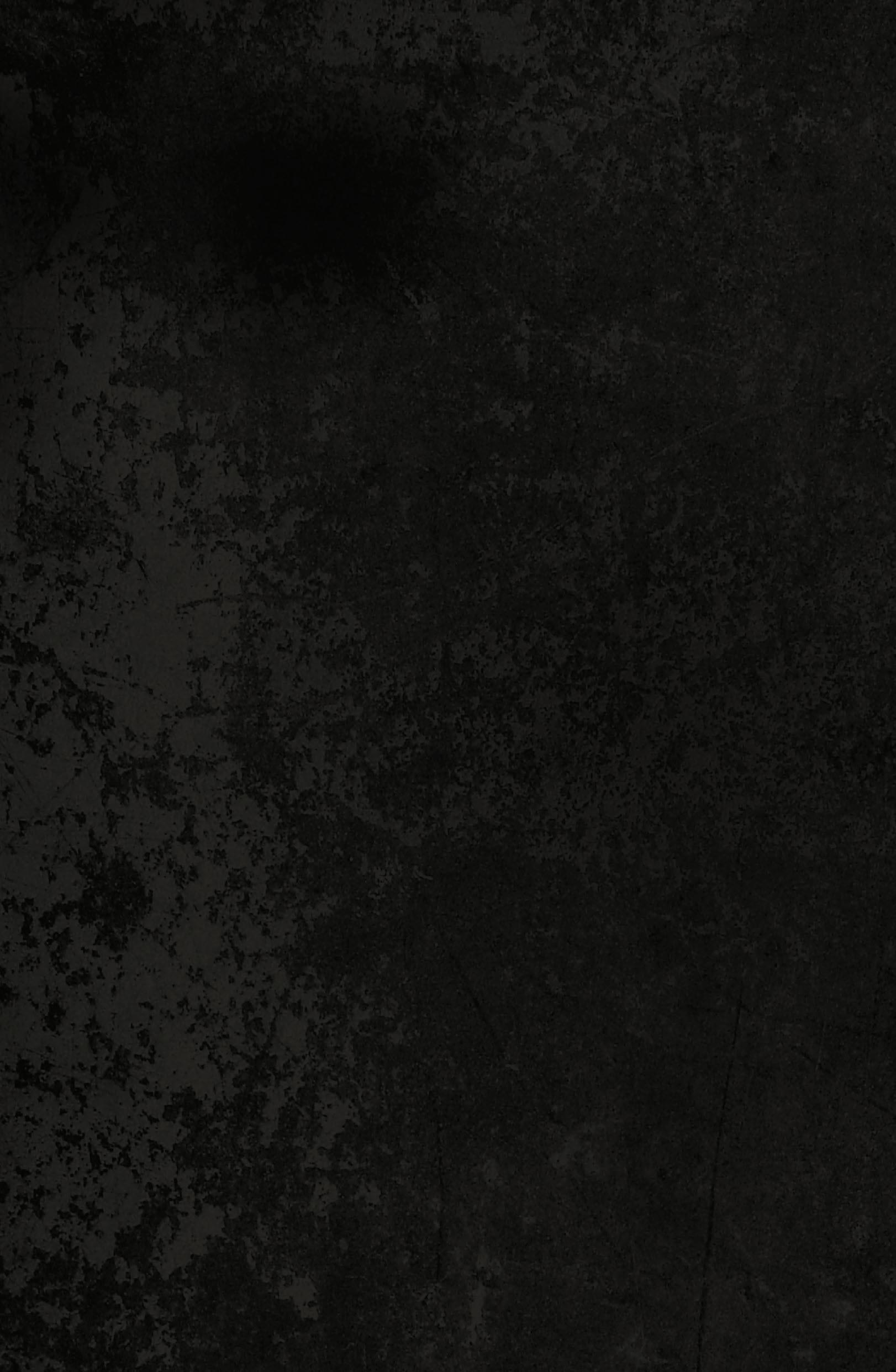

Imagine hearing — and seeing — every keystroke of a world-class piano performance in your own home. With spirio , you can enjoy music captured by renowned pianists, played with such nuance, power, and passion that it is utterly indistinguishable from a live performance.
Thousands of recordings by steinway artists are available at the touch of a button on the included iPad.
The library of music, videos, and playlists expands monthly and spans all genres. In addition to today’s greatest musicians, spirio delivers historic performances by steinway immortals , including Duke Ellington, Glenn Gould, Art Tatum, and many more.






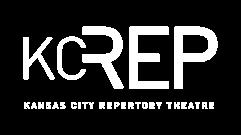
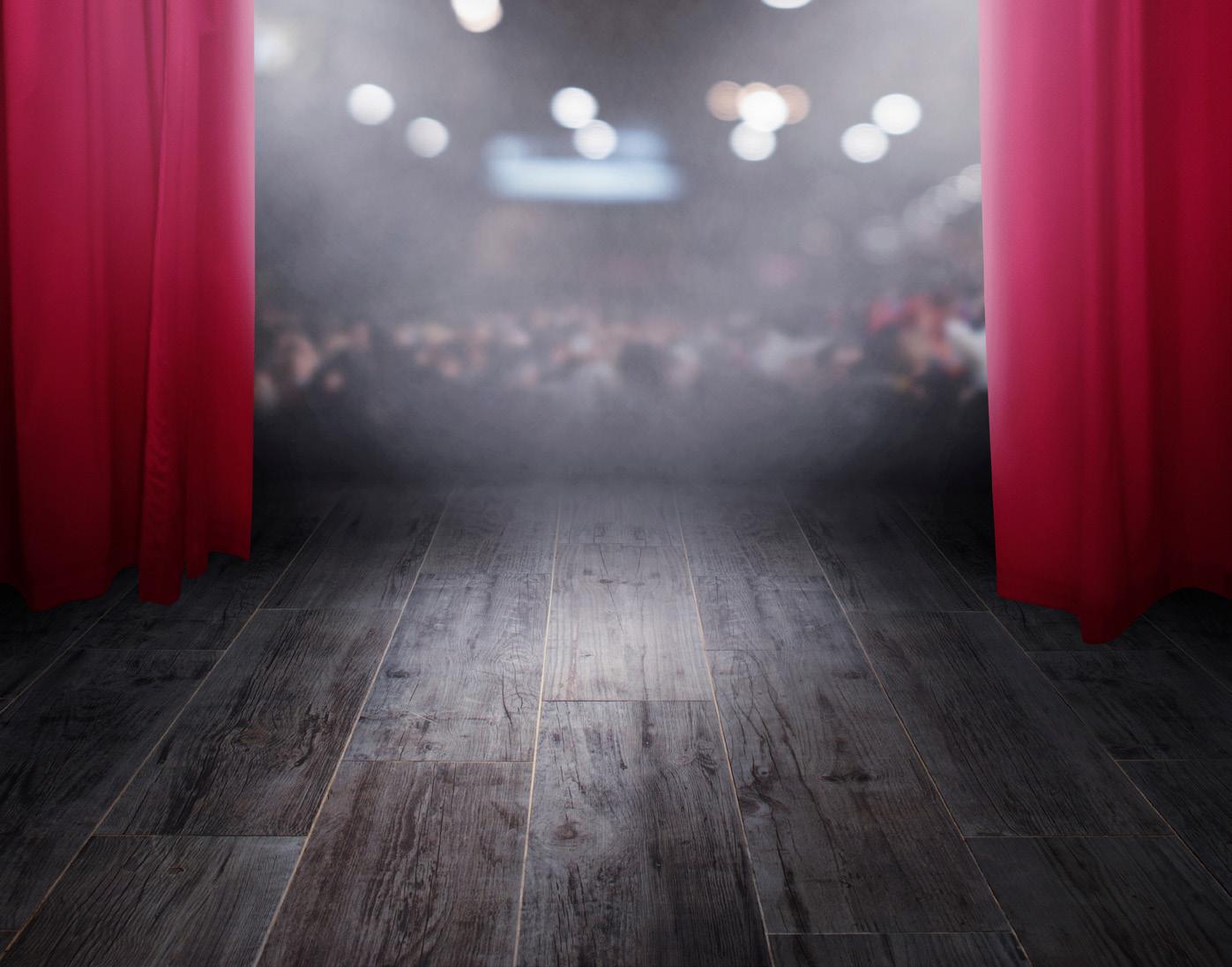
















The thought of getting a second opinion on your cancer diagnosis can be overwhelming. As the only National Cancer Institute-designated comprehensive cancer center in the region, we’re dedicated to making it easier. Our nurse navigators coordinate everything while our teams of nationally recognized doctors and specialists determine your precise diagnosis. You’ll have peace of mind knowing more minds are working together to provide you access to lifesaving care.


Connect with a nurse navigator today at 913-588-1227 or visit KUCancerCenter.org/SecondOpinion to learn more.







